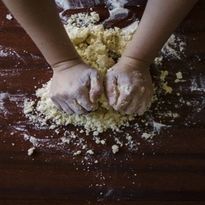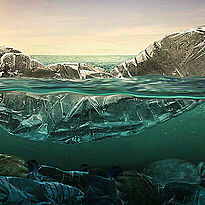In the Chemical and Physical Changes unit, students are led through a progression of three inquiry lessons that focus on
- Lesson 1

Solve: Artifact Examination + Molecular Mystery
Choose to solve either a live video mystery exploring changes to artifacts recovered from the Titanic shipwreck or an animated mystery that explores why some food can go back to its original form while some cannot. By the end of The Solve, students discover the differences between chemical and physical changes to matter. (Live Solve: 45-90 minutes; Animated Solve: 45-80 minutes).
- Lesson 2

Make: Lab Stations: Is it a Physical or Chemical Change?
Gather and analyze evidence to determine whether a physical change or chemical reaction has occurred. (75 mins)
- Lesson 3

Engineer: Solve an Environmental Problem caused by Synthetic Materials.
In The Engineer, students will research how a synthetic material is made and used, and what type of pollution it creates. They then work as engineers to determine what can be done to stop the pollution created by the synthetic material. (150 mins)
- Lesson 3

Engineer: Design a First-Aid Device to keep Hikers Safe.
In The Engineer Extension, students will apply their knowledge of chemical reactions that release or absorb thermal energy to design handwarmers or ice packs for the local hiking club. (100 mins)





